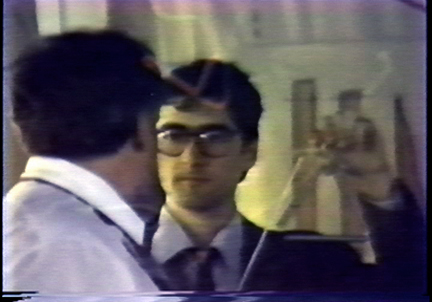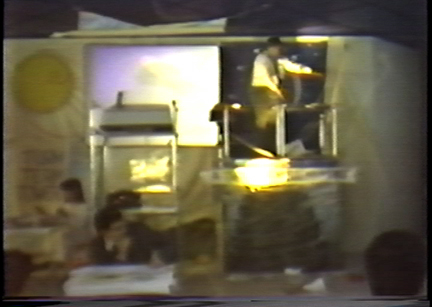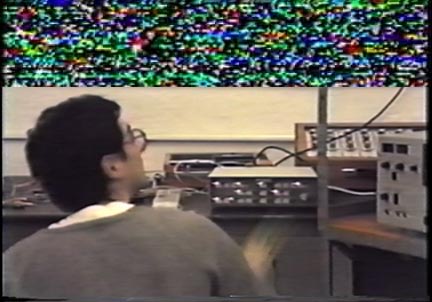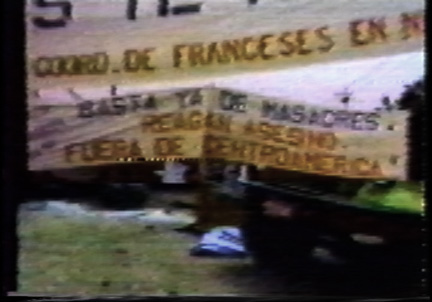|
A brief outline of early artistic activity by Dana Moser involving digital technology: In the days before the World-Wide Web, a global community of artists developed using the tools available in the era of 8 bit processors. The extreme limitations on visual richness imposed by the technology of the time inclined many of us to work in conceptual and text-based forms. Telecommunication came to be thought of as a medium for artistic expression, and practitioners became adept at switching back and forth between narrative/poetic text (sent as email) and the painfully slow downloading of images (via FTP or dedicated video hardware boxes whose transmissions were aptly referred to as "slow-scan.") I was directly influenced by the artistic community that had been cultivated through events such the annual telecommunications collaborative rituals created by Kit Galloway and Sherrie Rabinowitz' "Electronic Cafe," as well as MIT's Center for Advanced Visual Studies and the Visible Language Workshop. 1982: In one of the first artistic experimental uses of satellite technology, Dana Moser and Rachel Weiss created "Whorled in the Balance: the Perils of Pandora."  It was a collaboration with the french sculptor, Piotr Kowalski, who worked with a young programmer named Matt Belge to create "The Time Machine", a device which did real-time video temporal manipulation. To realize the project a production company was formed ("Kitchen Sync", which included Belge, John Waite and Mark Lapore.) -Because of the hostility of US corporate broadcast facilities, the project was moved to Canada, where the finished broadcast/performance took place simultaneously at the National Museum of Science and Technology in Ottawa and the Centre George Pompidou in Paris. 1983: Rachel Weiss and I collaborated again this time with Lowry Burgess to create "The Correspondent in Babylon" a slow-scan performance for the 1983 "Sky Art Conference" in Munich, Germany.  (from "The Correspondent in Babel", 1983)  In this event a fictional news correspondent sends closed-circuit transmissions of images bearing little resemblance to the sources they're claimed to be. In 1984-1985 I continued creating events using slow-scan video between the Massachusetts College of Art an a video collective in Managua, Nicaragua.  The appeal of these "town hall"-type events, was in their permitting direct video communication over phone lines between the people whose government was training and supplying an illegal terrorist army (us) and the citizens in the country where the murder and damage was taking place (them.) 
Articles for publication during this period: |